William Hemsworth's Blog, page 123
June 16, 2018
Ratramnus and the First Eucharistic Controversy
From the time of the apostles until the 9th century the real presence of Christ in the Eucharist was unchallenged. It was accepted as fact, and the faithful never questioned it. Paschasius Radbertus and Ratramnus were the two central figures in this first eucharistic controversy. St Paschasius was abbot of Corbie in the early 9th century, and he wrote extensively about the Eucharist in his work On the Body and Blood of the Lord . He wrote that the Eucharist is truly the body and blood of Christ and that he dwells in us. He dwells in us because we partake of him, and because of that we are one with Christ. In writing to a monk under his tutelage he writes, “Christ however lives on account of the father, because he was born the only begotten one of the father, and we live on account of him, because we eat him”. St. Paschasius came to this conclusion from sacred scripture and testimony of the Church Fathers (Catholic Encyclopedia). This view would be challenges by a fellow monk by the name of Ratramnus.
Ratramnus was monk whose superior was St. Paschasius. Ratramnus’s view on the Eucharist was quite different that his superior and is documented in his work also titled “On the Body and Blood of the Lord”. He explained, as most Protestants do today, that in the body of Christ is received “in figure”. It is not a physical manifestation but is a spiritual reality. He denies the real presence of Christ in the Eucharist and insists that Christ is present in faith.
In these two men we see a conflict of two worldviews. In Ratramnus we see a separation from the sacramental worldview that had been firmly established. We see the separation of physical and spiritual realities in which God has interacted with man since the beginning of creation. This separation has a domino effect and centuries down the road would manifest itself in humanism and a materialist worldview, though that was not his intention. In St. Paschasius we see that the physical contact with the risen Christ was part of what salvation was. Through that physical contact of consuming him we came into union with the Holy one. He is in us working to transform us and make us like him.
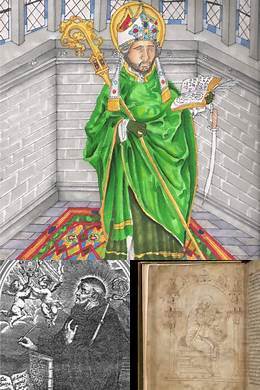
Works Cited
Pohle, Joseph. “St. Paschasius Radbertus.” The Catholic Encyclopedia. Vol. 11. New York: Robert Appleton Company, 1911. 23 May 2018 <http://www.newadvent.org/cathen/11518a.htm>.
June 14, 2018
Episode 10: Breaking Down The Ten Commandments – SoundCloud
In this episode I take a look at the Ten commandments and break them down in more detail.
Listen to Episode 10: Breaking Down The Ten Commandments by The Bible Catholic Show #np on #SoundCloud
June 10, 2018
The Jewishness of Christ
Within theology there are many different topics. One such topic is known as Christology, and it deals with who Jesus is. It deals with his nature, divinity, and how it is portrayed within the New Testament. There are many views of Christology that have been debunked over the years, and some are still taught today. Who was Jesus, and how does his Jewish heritage affect our understanding of the New Testament?
When we read the New Testament, we tend to read it through modern eyes. We read the Gospel accounts and see the divinity of Christ, but we often overlook key aspects that assist us in understanding him in a deeper way. We may have a good understanding of the doctrines that Christ preached, but pay little attention to his relationships and social interactions (Carter 150). In fact, understanding the Jewishness of Christ will have a big impact on our exegesis of the New Testament. By viewing the Jewishness of Christ, we are removing the presuppositions of western culture, and placing the New Testament back into its cultural and societal context.
One thing that many see Jesus as doing is abolishing the law, but is this really accurate? Certainly, there are some things a that are no longer applicable under the New Covenant, but Jesus tells us himself that he came to fulfill the law in Matthew 5:17. This seems to indicate that He recognized his Jewishness and embraced it. Regarding this Gerald Collins writes, “We throw away any right to comment on the way Jesus perceived reality, if we ignore the earthly particularity of his language (Collins 47).
Jesus spoke in a manner in which his Jewish audience would understand. Like other Rabbis of the time, he taught lessons by telling a story. One example is His example of putting new wine into old wineskins in Luke 5:36. A surface reading of the text suggests a disagreement between Jesus and the Pharisees in regard to Jewish dietary laws. These parables give us peeks into Jewish culture, and a proper understanding of them assists us in understanding the New Testament in a fuller way.
As previously stated, we tend to read these parables within the context of our western culture, but to do so is to miss the point. By reading scripture in this manner we run the risk of coming to a conclusion that in totally foreign to the intention of the text. That has ramifications for how we engage the rest of the New Testament.
Jesus was Jewish, and the first Christians were Jewish. The worshipped in the synagogue, kept kosher dietary laws, and strove to keep other aspects of the law. Most Christians are gentiles, and as a result it becomes hard to imagine Jesus as a Jewish man. We say it, but it is something that comes from our mouth with little understanding of the ramifications. This means that the Gospels should be seen as a conflict between Jesus and the Jewish leaders of his day, particularly in regard to the interpretation of the law. It also means that we measure what Jesus said with the understanding that he was a Jewish Rabbi in 1st century Palestine. These two things may be difficult for us to grasp, but when we do so we see the New Testament in its proper context, and the message of scripture become more fully alive.

Works Cited
Carter, Warren. “Proclaiming (in/against) Empire Then and Now,” Word & World 25/2 (2005) 149-158.
O’ Collins, Gerald. Jesus: A Portrait. New York: Maryknoll, 2013
Holy Bible, New Revised Standard Version
June 5, 2018
Six Books Every Catholic Should Read
There are so many books out there about the faith. Some are excellent, and others…well, not so much. In this video I detail six book (There are many others) that every catholic should check out. Two of them are mandatory. Enjoy!
June 2, 2018
Watch “A Protestant Seminarian Converts to Catholicism” on YouTube
Watch my first YouTube video which describes my conversion.
May 31, 2018
Mystery and Sacraments
When one begins to study sacred scripture the idea of mystery becomes very apparent. The New Testament and Septuagint speak of the Greek word Mysterion. When St. Jerome was translating the Hebrew and Greek manuscripts into what would be the Latin Vulgate, he used the word sacramentum, or sacrament in English. In fact, the sacraments are celebrations of the mysteries of God. The Old Testament has no shortages of these mysteries that give us clues of the nature of God and the sacred mysteries. This paper will seek to define mysterion, give examples of how these mysteries help reveal God’s identity, the role of ritual and sacrifice, and how God chooses to communicate with His people.
The word mystery is an anomaly of sorts. In some circles it is something that is not to be questions, but to be accepted. To others it is an invitation to explore, learn, and grow. At most basic level a mystery is something hidden, and the information needed to understand is not available. When it comes to God it is the opposite. God is not some cosmic force that wants to remain hidden from us. He was us to know Him, and he wants to be known by us. We come to know these mysteries of God through our senses, reason, and faith.
It is through our physical senses that we get to know the word around us. We learn what things smell like, we can see, hear, and see that this amazing world came from something. Science tells us that everything has an origin and cannot come from nothing. It is in this way that our senses testify to the existence of a creator. Secondly, we come to know these mysteries through the uses of our reason. We come to knowledge of the meaning and purpose of creation, even the creation of our own human lives, through our ability to reason. Through reason we enter into relationship with God. Lastly, the third way we understand the mysteries is through faith. The utilization of faith informs reason and is necessary for a personal relationship with God.
In the Old Testament there are many examples of how these mysteries reveal God’s identity, his relationship with humanity, and the nature and destiny of humanity. God’s identity is perhaps one of the biggest mysteries of all because he is transcendent and outside of time. We get a clue in the book of Exodus when God and Moses are interacting. The passage in question is Exodus 3:14 when Moses asks for God’s name, and God relies “This is what you shall tell the Israelites I AM sent me to you” (NAB). He also has power over creation as he can calm the storms and cause beasts to retreat. This reveals a God who is creator or all and nothing is above him. This has huge implications when it comes to God’s relationship with humanity. God is not inaccessible and not wanting to be discovered, but quite the contrary. Humanity was made in the image of him who is existence itself. We read this in Genesis 1:27 which states, “God created man in his image; I the divine image he created him; male and female he created them” (NAB). This shows that we were made to be in relationship with God. When we are in proper relationship we are that image of the divine creator, but when we sin and reject him we die. We have turned our back on God as is seen in Genesis 3:19. The nature and destiny of humanity is to live. God created man in his image, and he uses our physical senses to make him. He uses all means or creation, including the human body, to make himself known.
Within the Old Testament there are also many lessons regarding the priesthood and the role of ritual sacrifice and offerings. Regarding the priesthood, it is vital to understand that it is God who chooses and calls an individual to the priesthood. It is through the priesthood that pleasing sacrifices are offered to God to maintain the Abrahamic and Noahic covenants. In Numbers chapter 16 Moses describes the corrupt priests Korah who stood against Moses and Aaron. Not everyone has a claim to the priesthood because it is God who calls him. Scripture states this very clearly in Numbers 16:5 when Moses states, “May the Lord make known tomorrow morning who belongs to him and who is the holy one and whom he will have draw near to him!” (NAB). Later is verse 10 Moses states that it is God who allows the priests to approach him, and all the evil priests of Korah were destroyed. In Genesis 8:20 Noah offered a burnt offering for the Lord made a covenant to never destroy the Earth by flood. Likewise Abraham, then known as Abram, built an altar and offered a burnt offering to God and God made a covenant with him. This shows that ritual and sacrifice are important ways in which God communicates with his people through his priesthood.
In the Old Testament God also uses special ways to communicate with his people. One such example is with Moses in the book of Exodus. In Exodus 3:3 God uses the burning bush to communicate with Moses. Moses was intrigued by the site of a bush that was on fire but was not being destroyed. When Moses approached God told him to take his sandals off because it was holy ground. Another example with Moses is seen in Exodus 4:1-4. Moses was balking at the mission that God gave him to do. God told Moses to throw down the staff that he gave him, and the staff turned into a snake. God then told him to pick it up by the tail, and it turned back inti a staff. This got the attention if Moses, and Moses returned to Egypt to confront Pharaoh. Another example of God communicating with his people is the prophet Daniel. In Daniel chapter 2:19-23 God communicated with Daniel in a dream. In fact, there are many times in sacred scripture where God communicates through dreams. One has to be in close relationship with God to discern if it is truly God speaking.
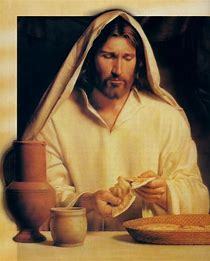
Works Cited
Catechism of the Catholic Church, 2 ed. New York: Doubleday, 2003. Print.
Holy Bible, New American Bible
May 29, 2018
St. Irenaeus and the Rule of Faith
In the second century Gnosticism threatened to tear the young church apart. It was a heresy that taught that all matter was evil, Jesus was spirit, and that true salvific doctrine was passed down through a secret oral tradition[1]. To combat this growing problem the early church father Irenaeus wrote a lengthy treatise titled Against Heresies. One of the methods used by the great church father was the rule of faith. In describing the rule of faith Irenaeus writes, “The Church, though dispersed through our the whole world, even to the ends of the earth, has received from the apostles and their disciples this faith: [She believes] in one God, the Father Almighty, Maker of heaven, and earth, and the sea, and all things that are in them; and in one Christ Jesus, the Son of God, who became incarnate for our salvation [2].” This rule of faith would lay the groundwork for what would become the Apostles’ Creed. Ireneaus argues that the faith was given by Christ to the Apostles, and then to the bishops to whom the disciples appointed. This is what we now call Apostolic Succession.
The rule of faith also shows that Christ was truly incarnate, and that matter was created by an eternal God and not evil. The rule of faith was a vital part in combating gnostic teaching because it showed that they had no historical, scriptural, or apostolic support for the claims that they were making. It helped expose their schismatic and anti-scriptural view of Christianity. Irenaeus also appealed to Ephesians 1:10 in his refutation of Gnosticism. That passage of scripture states, “as a plan for the fullness of time, to gather up all things in him, things in heaven and things on earth [3].” The church was to be a unified body of believers with Jesus Christ as its head and the gnostic heresy was causing division. It is linked with the rule of faith in that there was only one faith handed down from Christ. There was not one faith for one group, and a special secret faith for a select few. The faith in Christ is available to all people and in that we should be unified.
The rule of faith previously cited is a great tool in confronting false doctrines in our own times, and in our churches. There is no shortage of false doctrine and some of these groups are outpacing evangelical churches in evangelization even though there number are smaller. The rule of faith is a great tool because it shows that the faith is not a new invention, but was passed down by Christ himself. It shows that Christ is God incarnate, and firmly teaching that the Trinity is one being with three distinct persons. Many of these groups deny the Trinity and showing scriptural support, and that it was taught from the beginning is good place to start. Whether it be in person, phone, or email dialogue about the truth can mean a lot to someone caught in false doctrine. It gives them someone to ask questions to and the Holy Spirit can plant a seed.
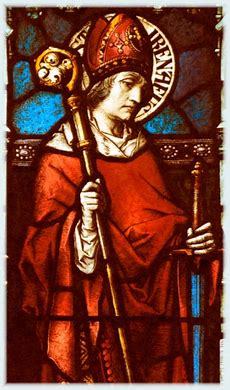
Works Cited
1. Olsen, Roger E. The Story of Christian Theology: Twenty Centuries of Tradition & Reform. (Downers Grove, IL: IVP Academic, 1999), 29.
2. Irenaeus. Against Heresies. Christian Classics Etherreal Library, retrieved May 19, 2018
http://www.ccel.org/ccel/schaff/anf01.ix.ii.xi.html
3. Ephesians 1:10, New Revised Standard Version
May 28, 2018
Episode 8: Defending the Eucharist Using Scripture – SoundCloud
On this week’s episode of The Bible Catholic Show I defend the Eucharist using scripture.
Listen to Episode 8: Defending the Eucharist Using Scripture by The Bible Catholic Show #np on #SoundCloud
May 26, 2018
The Heresies of Adoptionism and Docetism in the Early Church
When we think of the early days of Christianity, there is a tendency to think about our ancestors in the faith in today’s terms. We may think they met in churches when they actually met in homes. That every doctrine that we hold to today was laid out the same back then. Unfortunately, this line of thinking could not be further from the truth. The early Church dealt with many issues, and one of those issues was over Christology.
When it comes to Christology the early Church specifically had to deal with Adoptionism and Docetism. These are two Christologies that were heretical in nature, but they were attractive to people because they answered some lingering questions that had not yet been answered. Before those answers are discussed it is prudent to define these two terms.
Adoptionism is a Christological belief that Jesus was adopted as the son of God either after his baptism, resurrection, or ascension. This view was seen in many parts of early Christianity, but a writer by the name of Apollinaris wrote about it extensively. Regarding this Richard Norris writes, “The divine Logos ‘became human’ in the sense that he became embodied and thus shared the structural constitution of a human being” (Norris 22). In the view of Adoptionism Christ only became Christ after he was adopted after spending his life doing God’s will. In other words, the He was not born with two natures.
The other Christological view to be discussed is known as Docetism. Docetism was an early form of Gnosticism which taught that all matter was evil. Since all matter was evil it stands to reason that Christ was not crucified. They saw no need for the Son to make himself involved in physical matters (Norris 13). Many Church Fathers such as St. Irenaeus and Tertullian fought against the growth of this sect. The sect hated the flesh and taught that the divine spirit left the person of Christ before he died on the cross. They failed to realize that man was made in God’s image, and even with all its faults the flesh is an object of God’s love and grace (Norris 13).
These two theories became popular, and even thrived, because they answered two questions. Firstly, can a “whether a mediatorial Logos, when he becomes incarnate, can honestly be understood as God present in person” (Norris 8). Secondly, if the idea of the incarnation is a contradiction. There were several reasons why they were rejected. In the case of Adoptionism it simply contradicts scripture. Scripture teaches in many places that the Son always was and was not something that came later. One such passage is John 1:1 which states, “In the beginning was the Word, and the Word was with God, and the Word was God” (NRSV). This shows that Christ always, and since the womb Christ was fully human and fully divine. For his sacrifice on the cross to be redemptive it had to be a sinless offering. Tis could not have happened if it was a man who was adopted at thirty years of age. In the case of Docetism scripture also states that Christ willingly put on flesh. We see this in Hebrews 2:14, “Since, therefore, the children share flesh and blood, he himself likewise shared the same things, so that through death he might destroy the one who has the power of death, that is the devil” (NRSV). This shows again that if Christ was not also flesh then the cross meant nothing, and the Gospel is nullified.
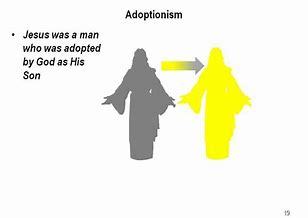
Works Cited
Holy Bible, New Revised Standard Version
Norris, Richard. The Christological Controversy. Philadelphia, PA: Fortress Press. 1980. Print.
May 23, 2018
Aquinas and the Principle of Double Effect
Over the course of our lives we will be faced with many difficult decisions. These decisions may be life altering and may change us forever. In the encyclical Veritatis Splendor, Saint Pope John Paul II writes, “Acting is morally good when the choices of freedom are in conformity with man’s true good and thus express the voluntary ordering of the person towards his ultimate end: God himself, the supreme good in whom man finds his full and perfect happiness” (Veritatis Splendor para 72). In these circumstances there are right and wrong moral decisions, and the principles of double effect and material cooperation assist us in making the right decision.
The principle of double effect, or PDE, has its origins with St. Thomas Aquinas and is one of the best strategies in solving complex morality issues. This principle states that it is possible to make a decision that has both good and bad effects. Just because it has both effects does not mean that it is not morally permitted. There are conditions that must be met for a decision to fall under this principle. The act itself must be good or morally indifferent. The good effect must not come from evil. Evil is not the intended result. If evil is the effect it should be a last resort and the good effect should be equal or greater. This principle, along with material cooperation, help to make the best moral decision out of possibly the worst of circumstances.
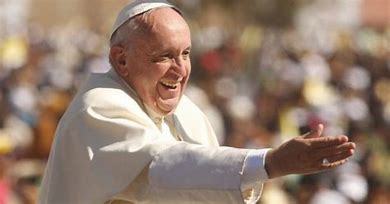
When an individual assists in some way in wrongdoing this is called material cooperation, and there are two categories. The first is known as immediate material cooperation an individual, though they may disapproval, assists in the act. They may tolerate it, but do not approve. The second in Mediate material cooperation, and consists of proximate mediate and remote mediate material cooperation. Proximate mediate is immoral in all cases, and may consists in the manufacturing of a device, such as Sarin gas, that is only meant for evil. Remote mediate may be permitted based on the circumstance, such as not being able to find viable employment elsewhere and having to feed your children. In this circumstance someone may be the janitor at the factory that produces Sarin gas because employment may not be had elsewhere. This is why moral decisions should be looked at to get all the factors. Regarding this Pope John Paul II writes, “In this view, deliberate consent to certain kinds of behaviour declared illicit by traditional moral theology would not imply an objective moral evil” (Veritatis Splendor para 75).
A hard case when it comes to PDE is the subject of abortion. Abortion is the termination of a human life while it is still in the womb. Abortion being wrong is not a matter of just the church saying so. This can be deduced by the use of reason without the aid of faith (Smith & Kaczor 29). Imagine if a couple had six kids at home, and while pregnant with the seventh the mother is diagnosed with uterine cancer. Removing the cancer would end the pregnancy, but not removing it the mother will perish while the child lives. After much prayer and anguish the parents opt to remove the cancer for the benefit of the six children they have to raise. This is an effective use of PDE since the intent was not to terminate the pregnancy, but to remove the cancer. Conversely a woman who chooses to terminate the pregnancy because she just does not want another child does not meet the conditions of PDE.
Proponents of proportionalism reject PDE because the moral actions of the individual should be judged by the consequences that ensue. In short, the outcome that brings the greatest good or the least bit of evil is the appropriate action. Proportionalism does not have a set definition of what is morally upright, and it can change based on the individual. It is because of these reasons that proportionalism is condemned by Veritatis Splendor.
Works Cited
Pope John Paul II. Veritatis Splendor. http://w2.vatican.va/content/john-paul-ii/en/encyclicals/documents/hf_jp-ii_enc_06081993_veritatis-splendor.html. Accessed February 27, 2018.
Smith, Janet E and Kaczor, Christopher. Life Issues, Medical Choices: Questions and Answers For Catholics. Servant. Cincinatti, OH: 2016. Print
William Hemsworth's Blog
- William Hemsworth's profile
- 7 followers



